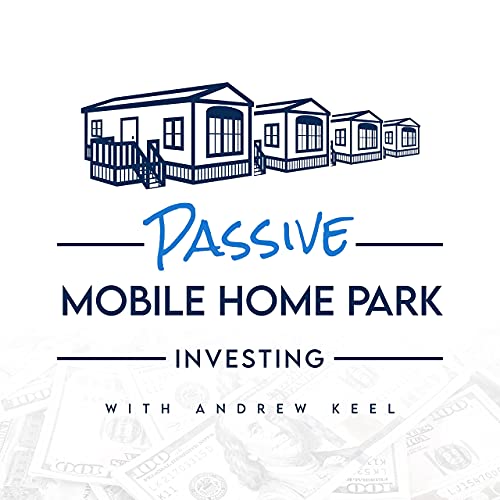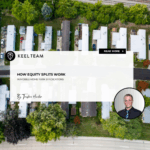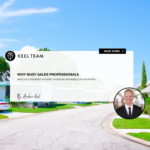Maximizing Returns in Mobile Home Park Investments: The Preferred Path
-
 Tristan Hunter - Investor Relations
Tristan Hunter - Investor Relations
When it comes to Mobile Home Park Investments, Limited Partner Investors and Operators (General Partners) generally have different perspectives on the preferred return metric.
In the landscape of mobile home park investments, preferred returns usually act as a guiding force for both investors and operators. Beyond being financial markers, they embody the trust and collaboration within partnerships, molding the direction of strategies. Throughout our exploration, we’ll explore the depths of preferred returns, revealing actionable insights and effective strategies typically crucial for success in this niche asset class.
Let’s jump right in!

Understanding Preferred Returns in Mobile Home Park Investments
From an investor’s perspective, they commit their hard-earned funds, anticipating a robust return above bonds before any profits emerge from the deal. It forms the bedrock of the investor and operator relationship, demanding acknowledgment and consideration. Conversely, Mobile Home Park Operators may not express overwhelming enthusiasm for preferred returns, viewing them with a measured perspective rather than unreserved enthusiasm.
Many mobile home park operators have found ways to crack the preferred return conundrum. Yet, numerous struggle to structure deals and business plans around the standard 6%-8% preferred return.
Challenges with Preferred Returns in Mobile Home Park Investments
- Misinterpretation by retail investors who view preferred returns as guaranteed cash flow yields, leading to disappointment when distributions fall below the preferred return. It’s often a communication gap, but in investing, certainty is never a given.
- Overemphasis by GPs on meeting the preferred return sometimes leads to excessive cash distribution, which might not be the most strategic use of that capital.
- Older mobile home parks often come with significant deferred maintenance costs that won’t generate immediate cash flow.
- The pursuit of achieving the preferred return can sometimes push operators to sell the property prematurely, prioritizing total return over maximizing hard cash.

Impact on Investment Strategies: Older Mobile Home Parks
As they say, investors can’t live on Internal Rate of Return (IRR) alone. Now, preferred returns shouldn’t be discarded entirely because they serve a vital purpose when reviewing a mobile home park deal:
- Properly incentivizing and rewarding investors for taking on investment risks.
- Prompting GPs to quickly deploy capital and grow cash flow.
This dynamic works well when both parties share similar expectations, and the operator aligns the business model with the deal structure (preferred return + profit splits).
However, problems arise when the business plan and the asset don’t meet investor expectations or deal structure.
This often occurs with investments in older, lower-rated parks in secondary markets requiring significant improvements. Inexperienced operators might assume they can revamp operations on a tight budget and still distribute an impressive 8% yield, leading to dashed hopes. Unexpected expenses, extensive repairs, or a sudden drop in collections can put the entire deal at risk due to insufficient working capital.
Purchasing such a park without reinvesting cash into improvements often hinges on finding a buyer willing to pay more than the purchase price—a risky business model.
However, the same deal under a three-year capital improvement plan, reinvesting everything back into the park, could yield success.
It’s not necessarily about the wrong mobile home park; often, it’s the wrong investor base.
Optimizing Partnerships: Partnering for Long-Term Success
What could resolve this?
- Clear communication about cash flow expectations in all investor interactions before purchase, prominently highlighted rather than buried in a presentation deck.
- Partnering with a family office or private equity firm with ample resources, focusing on total return rather than high cash flow.
These mobile home parks align well with high-octane private equity-style investing, prioritizing IRR over current yield. The pref. is usually settled from the sale or refinance proceeds, leaving the remaining profit for distribution between the Operator and Investor based on pre-negotiated splits.
Ultimately, reinvesting cash flow to boost Net Operating Income in a value-add mobile home park tends to maximize partnership returns over time, even if it means seeing an unpaid preferred return accumulate.
Learn more about mobile home park investing.
Interested in learning more about mobile home park investing? Get in touch with us today to find out more.
Disclaimer:
The information provided is for informational purposes only and should not be considered investment advice, nor a guarantee of any kind. There are no guarantees of profitability, and all investment decisions should be made based on individual research and consultation with registered financial and legal professionals. We are not registered financial or legal professionals and do not provide personalized investment recommendations.

Tristan Hunter - Investor Relations
View The Previous or Next Post
Subscribe Below 👇





